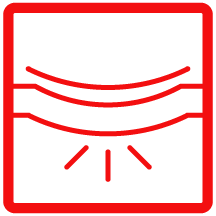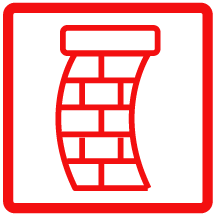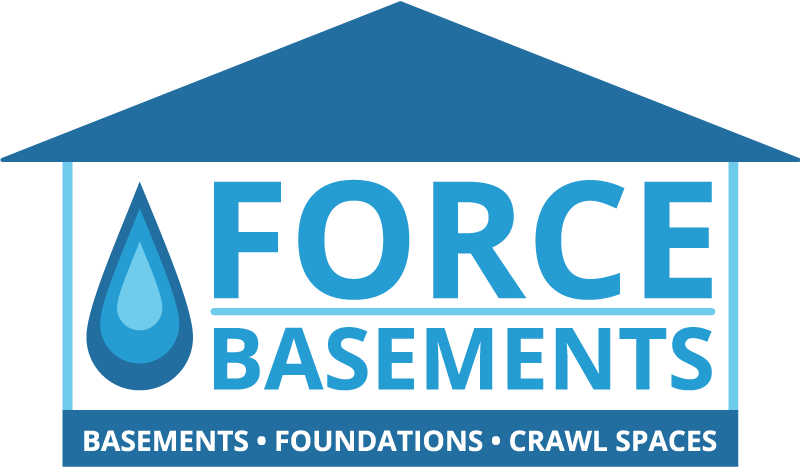Foundation Problems

Recognize the Warning Signs
Settling foundations can lead to numerous problems within your home, ranging from water seepage to catastrophic wall collapses — which could render your home uninhabitable. Our team has put together a list of common warning signs of foundation repair problems that could indicate problems with your foundation. Watch for these symptoms and contact our foundation repair experts to schedule an inspection and foundation repair estimate.
Common Problems

Cracks in Foundation Walls
If you have a block or poured concrete foundation, settlement can cause cracks, which are a sign of breaking and weakening in the foundation — after which it could potentially move — and cause water leaks in your basement.

Sagging Floors
Sagging floors can be a sign of foundation problems. They most often occur over crawl spaces.

Exterior Brick Cracking
Exterior brick cracking occurs when your foundation has settled. They look like stairsteps or appear as gaps in brickwork. If your home has a brick veneer, cracking can signal movement in the foundation.

Drywall Cracking
Drywall cracks occur when excess pressure from the settling of your home causes the drywall to pull apart. This most often occurs in corners.

Cracks by Windows & Doors
Doors and windows in your home are prone to cracking when you have foundation settlement. These cracks appear from the corners of the window or door jambs.

Hard-to-Open Windows & Doors
Foundation settlement can cause your windows to become hard to open or close. Additionally, excess pressure from the settlement of your foundation can cause your door to become sticky and hard to open.

Leaning or Bowed Walls
Leaning or bowing basement walls are a sign of foundation issues. They can also allow water leaks in your basement.

Leaning or Settling Chimney
A leaning or settling chimney is a serious safety issue. Contact our team immediately if you notice your chimney is leaning away from your home.

Sinking Foundation
Sinking occurs when a foundation continues its downward movement into the soil. This can result in foundation cracks, uneven floors, and can even damage the structure and utilities in the home.
Dark Spots & Efflorescence
As water seeps through porous materials like brick, cement, and concrete, it can leave stains as it carries minerals and contaminants along with it. Dark spots and efflorescence — or the movement of salt to the surface of a porous material — are signs of water, which in turn is a sign of deteriorating, weak basement walls.
Foundation Assessment & Evaluation
After determining the type of foundation in your home — clay, block, brick, or poured concrete — we then determine if it’s deteriorating, and if so, the severity. This is an important step when choosing the solution because if the wall is too deteriorated, certain products will be too risky to install; in these situations, we beat the competition by offering a rebuild solution. Next, we determine if the foundation is bowing vertically or horizontally and pinpoint the cause, like gutters, grade, tree roots, or driveway. We also look for vertical or horizontal foundation shearing. These steps dictate what the solution is for you. Our team can normally have a foundation issue diagnosed and develop a solution to fix it within a half-hour or less.
Identifying Structural Weaknesses
Thankfully, foundation problems are usually evidenced in obvious ways. Homeowners should look for cracks, dark spots, white powdery substance, and flaking paint on the interior walls. Look at the sill plate and see if it’s flush with the inside of the wall near the corners but set back (recessed) toward the middle. Cracks in brick outside, your house looking lopsided, and windows and doors not closing properly or swinging open on their own when not latched are other telltale signs. Finally, homeowners should watch for cracks in interior walls on main or upper levels and humps on floors.
Soil Impact on Your Foundation
When soil dries, there is usually a small void between soil and foundation. When soil soaks in water, it becomes heavy and pushes on the foundation, a process known as hydrostatic pressure. When water freezes, it expands, and the pressure forces the foundation to give over time if it wasn’t built properly. So, that crack will also allow water to run down it during a heavy rain that comes down faster than the soil can soak in water, allowing what’s called running or runoff water to get between the soil and foundation and enter any cracks, causing leaks.
Service Area
Force Basements proudly provides foundation repair, basement waterproofing, bowed wall repair, and crawl space repair services to homes and businesses in Bloomington, Peoria, the Quad Cities, and surrounding communities.


